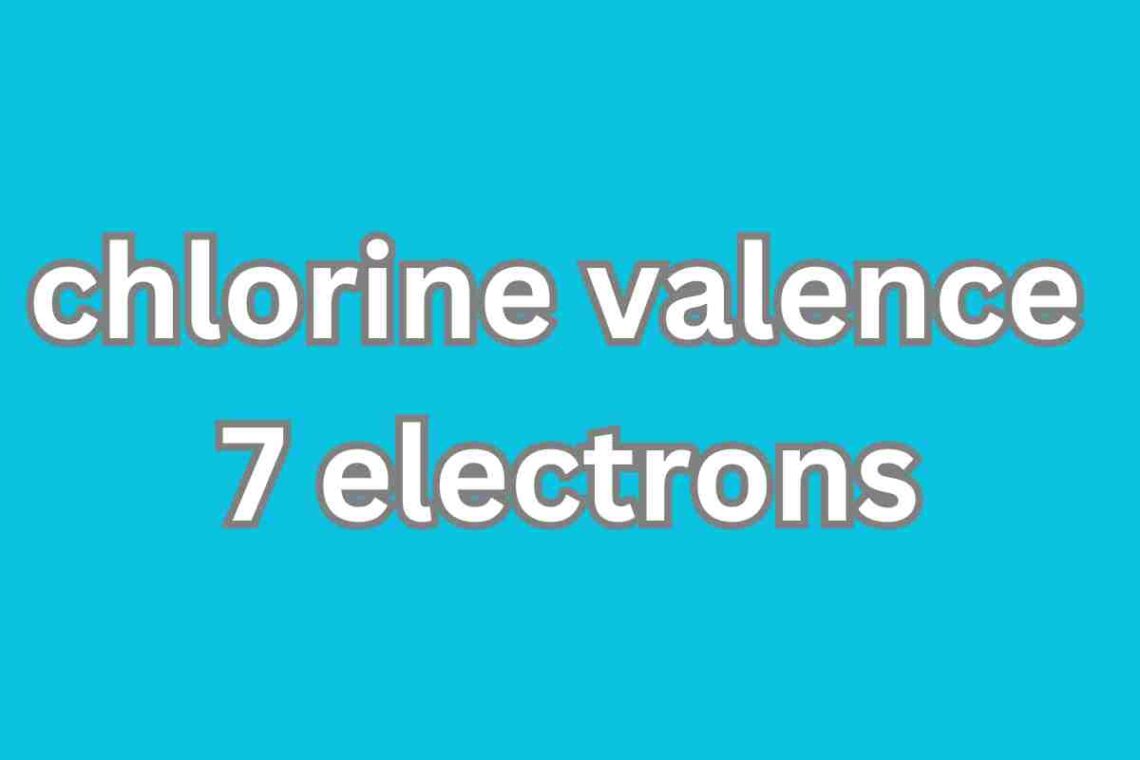Chemistry, the science of matter, is a fascinating world of atoms, molecules, and chemical reactions. At the core of this discipline lies the concept of valence electrons, which plays a pivotal role in determining the chemical behavior of elements. In this article, we will delve into the world of CL valence electrons, exploring their significance in chemistry.
Introduction
What are valence electrons?
The electrons at the outermost point of an atom are called valence electrons. They are involved in chemical reactions. They determine an element’s reactivity and ability to bond with other factors.
Importance of valence electrons
Valence electrons are crucial in understanding the chemistry of elements, as they dictate how components interact, leading to the formation of compounds.
Understanding Chemical Elements
Before we dive into CL valence electrons, let’s grasp the basics of chemical elements and their atomic structure. All features are composed of atoms, each with a unique atomic structure. At the heart of an atom lies the nucleus, which contains protons and neutrons, while electrons orbit the nucleus.
Definition of CL Valence Electrons
Explanation of CL as a chemical element
Chlorine, with the symbol CL, is a chemical element known for its distinctive greenish-yellow color and pungent odor. It is a vital component in various chemical processes and compounds.
Valence electrons in CL
Chlorine has seven valence electrons, making it part of the halogen group in the periodic table.
Role of CL Valence Electrons in Chemical Reactions
Chlorine’s valence electrons play a crucial role in its chemical reactivity, influencing its ability to form compounds and participate in chemical reactions.
Determining the Number of Valence Electrons in CL
How to find the number of valence electrons in CL
To determine the number of valence electrons in chlorine, you can look at its position in the periodic table. Chlorine is in Group 17, which means it has seven valence electrons.
Periodic Table and CL Valence Electrons
The periodic table provides a valuable resource for understanding the number of valence electrons in various elements, including chlorine.
Chemical Properties of CL Valence Electrons
How Valence Electrons Influence Chemical Properties
Valence electrons heavily influence an element’s chemical properties. In the case of chlorine, its seven valence electrons result in distinctive chemical characteristics.
Examples of CL’s Chemical Properties Due to Valence Electrons
Chlorine’s valence electrons contribute to its role as a powerful oxidizing agent and involvement in various chemical reactions.
CL Valence Electrons and Bonding
Interaction of CL Valence Electrons with Other Elements
Chlorine’s valence electrons readily interact with other elements, seeking to achieve a stable electron configuration.
Formation of Chemical Bonds
Chlorine forms chemical bonds with elements like sodium, resulting in compounds like sodium chloride (table salt).
Types of Bonds Involving CL
Chlorine can form covalent and ionic bonds, depending on the elements it interacts with.
The Role of CL Valence Electrons in Compounds
CL Valence Electrons in Compounds
Chlorine’s valence electrons are crucial in forming various chemical compounds.
Chemical Compounds Formed by CL
Chlorine is a crucial component in compounds like hydrochloric acid, PVC, and disinfectants, all of which have significant real-world applications.
Importance in Chemistry
Significance of CL Valence Electrons in Chemical Reactions
The role of chlorine’s valence electrons in chemical reactions extends to numerous industrial processes, from water treatment to the production of polymers.
Real-World Applications
Chlorine’s valence electrons are integral to various applications, including sanitation, plastics manufacturing, and the production of chemicals.
Conductivity and CL Valence Electrons
Conductivity Properties
Chlorine’s valence electrons also influence its electrical conductivity properties.
Relation to Valence Electrons
The number of valence electrons in chlorine contributes to its ability to conduct electricity in certain forms.
Conclusion
In conclusion, CL valence electrons are a critical component in chemistry. They define the chemical behavior of chlorine, influence its interactions with other elements, and play a vital role in the formation of numerous compounds. The real-world applications of chlorine and its valence electrons are diverse and critical to various industries.
Frequently Asked Questions (FAQs)
What are valence electrons?
- The outermost electrons in an atom, known as valence electrons, give an atom its chemical reactivity.
What is the valence electron count of chlorine (CL)?
- Chlorine has seven valence electrons.
Why are valence electrons necessary in chemistry?
- Valence electrons determine how elements interact with each other and influence chemical reactions.
What is the significance of chlorine in industrial processes?
- Chlorine is used in various industrial applications, including water treatment, plastics manufacturing, and chemical production.
How do chlorine’s valence electrons affect its electrical conductivity?
- The number of valence electrons in chlorine plays a role in its electrical conductivity properties.






